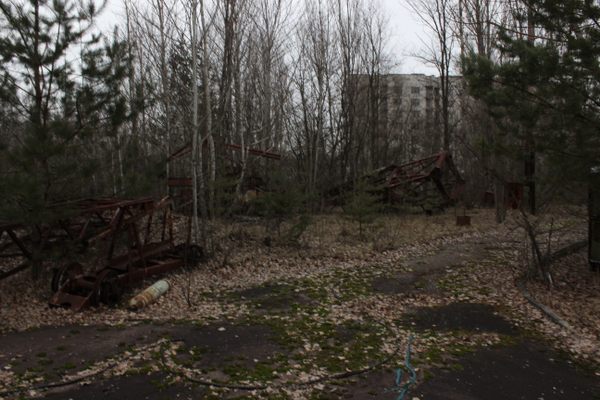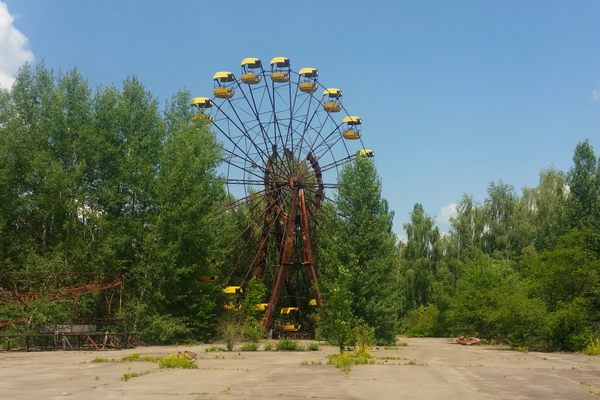About
Walking through the vast Exclusion Zone surrounding the stricken Reactor Number 4 in Chornobyl is a somber experience. Entire villages and towns have gradually begun to disappear and be reclaimed by nature. There are some 90 towns inside the Zone, but the most iconic and well-known is the worker’s city of Prypiat. Opened in 1970, it existed for just 16 years before being abandoned to a nuclear fallout a hundred times more lethal than the bombs dropped on Hiroshima and Nagasaki.
Prypiat was a youthful city; nuclear power was at the forefront of modern technology, and the average age of the 50,000 or so who lived in Prypiat was around just 26 years old. The city was built to be one of the most modern in the former Soviet Union, and geared to youth. It had nightclubs, sports centers, swimming pools, bars, and romantic cafes overlooking a lake. It also had a football team, the FC Stroitel Pripyat.
Like many soccer teams throughout the USSR, the team was formed out of a group of workers, stroitel meaning "builder" in Russian. They were founded soon after Prypiat was completed, playing in the fifth tier of the Soviet football league pyramid, as well as competing in regional competitions.
FC Stroitel, playing in the shadow of the newborn nuclear reactors, in white shirts with blue shorts and red stockings, had their best season in 1985, finishing second and looking good for promotion to the higher reaches of the Soviet league system. Their home ground was called the Avanhard Stadium, capacity 5,000, located a few hundred yards from the now-iconic empty amusement park on Sportyna Street.
Walking through this silent city of ruins, past the crumbling apartment blocks, shopping precincts, and abandoned hospitals and schools is a haunting experience. But there is something especially poignant about seeing the places built for leisure and entertainment falling apart. Approaching the old stadium, you pass rusted floodlight towers, some toppled over, and into a perfect rectangle of tall trees, surrounded by a concrete moat. It takes a while to recognize that you are looking at the football pitch, surrounded by a running track. Not many places in Chernobyl show the startling reclamation of nature as much the height of the trees on the football field, which have sprung to over 30 feet in just as many years.
On the far side of the old pitch are the remains of the main stand. You can still see the tunnel where the teams would have left the home and away dressing rooms to enter the pitch. Rows of rotting wooden benches line the concrete stand, leading up to the ruins of the covered press box.
Midfield Magazine reported how on April 26, 1986, FC Stroitel Prypiat's opponents for the upcoming weekend’s fixture, the magnificently Soviet named, FC Mashinostroitel, were preparing to leave for Prypiat. The sharp end of the season was approaching, and the two sides were scheduled to play in the semi-final of the Kyiv Regional Cup. A helicopter landed on FC Mashinostroitel’s training field, and a fraught-looking official informed them, “lads, go home, you’re not going to Prypiat tomorrow.” The cataclysmic events unfolding at Chornobyl meant no football team would ever play there again.
Related Tags
Community Contributors
Added By
Published
April 24, 2017


















































